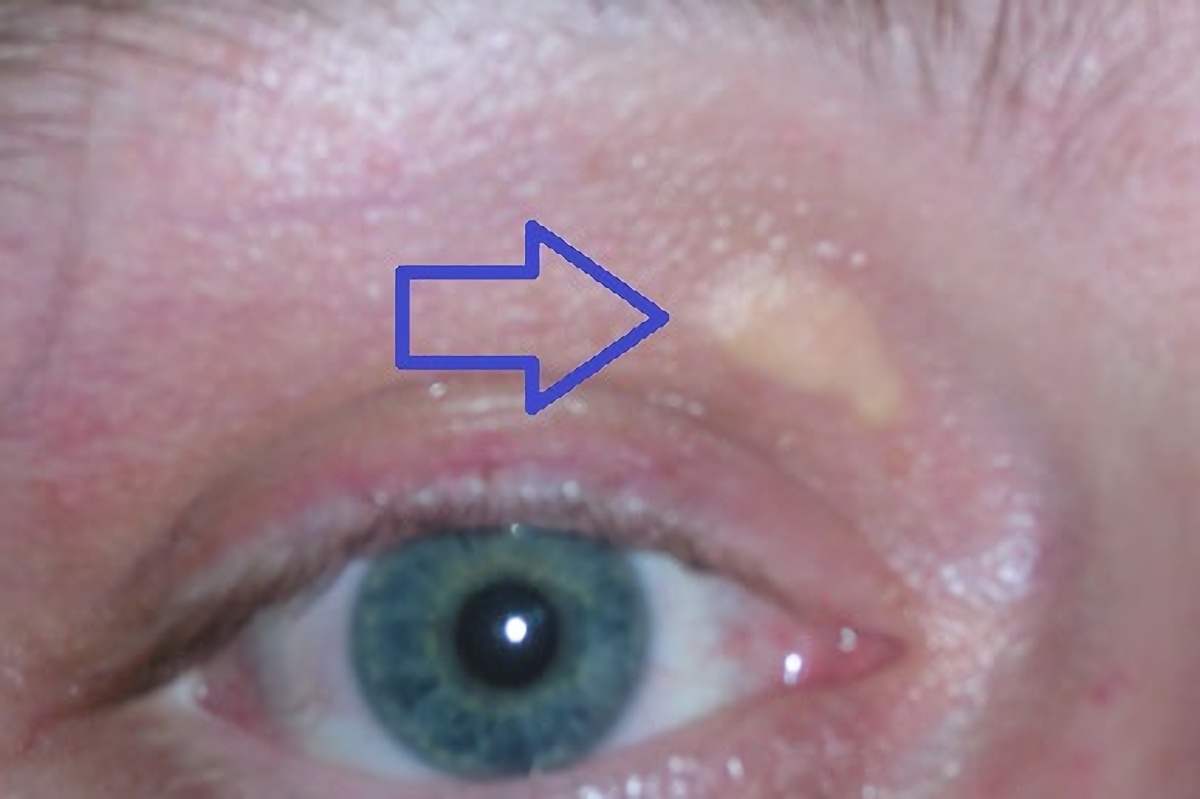|
Glomerular Basement Membrane
The glomerular basement membrane of the kidney is the basal lamina layer of the glomerulus. The glomerular endothelial cells, the glomerular basement membrane, and the filtration slits between the podocytes perform the filtration function of the glomerulus, separating the blood in the capillaries from the filtrate that forms in Bowman's capsule. The glomerular basement membrane is a fusion of the endothelial cell and podocyte basal laminas, and is the main site of restriction of water flow. Glomerular basement membrane is secreted and maintained by podocyte cells. Layers The glomerular basement membrane contains three layers: The glomerular membrane consists of mesangial cells, modified pericytes that in other parts of the body separate capillaries from each other. The podocytes adjoining them have filtration slits of diameter 25 nm that are formed by the pseudopodia arising from them. The filtration slits are covered by a diaphragm that includes the transmembrane protein ... [...More Info...] [...Related Items...] OR: [Wikipedia] [Google] [Baidu] |
Kidney
In humans, the kidneys are two reddish-brown bean-shaped blood-filtering organ (anatomy), organs that are a multilobar, multipapillary form of mammalian kidneys, usually without signs of external lobulation. They are located on the left and right in the retroperitoneal space, and in adult humans are about in length. They receive blood from the paired renal artery, renal arteries; blood exits into the paired renal veins. Each kidney is attached to a ureter, a tube that carries excreted urine to the urinary bladder, bladder. The kidney participates in the control of the volume of various body fluids, fluid osmolality, Acid-base homeostasis, acid-base balance, various electrolyte concentrations, and removal of toxins. Filtration occurs in the glomerulus (kidney), glomerulus: one-fifth of the blood volume that enters the kidneys is filtered. Examples of substances reabsorbed are solute-free water, sodium, bicarbonate, glucose, and amino acids. Examples of substances secreted are hy ... [...More Info...] [...Related Items...] OR: [Wikipedia] [Google] [Baidu] |
Agrin
Agrin is a large proteoglycan whose best-characterised role is in the development of the neuromuscular junction during embryogenesis. Agrin is named based on its involvement in the aggregation of acetylcholine receptors during synaptogenesis. In humans, this protein is encoded by the ''AGRN'' gene. This protein has nine domains homologous to protease inhibitors. It may also have functions in other tissues and during other stages of development. It is a major proteoglycan component in the glomerular basement membrane and may play a role in the renal filtration and cell-matrix interactions. Agrin functions by activating the MuSK protein (for Muscle-Specific Kinase), which is a receptor tyrosine kinase required for the formation and maintenance of the neuromuscular junction. Agrin is required to activate MuSK. Agrin is also required for neuromuscular junction formation. Discovery Agrin was first identified by the U.J. McMahan laboratory, Stanford University. Mechani ... [...More Info...] [...Related Items...] OR: [Wikipedia] [Google] [Baidu] |
Alport Syndrome
Alport syndrome is a genetic disorder affecting around 1 in 5,000–10,000 children, characterized by glomerulonephritis, end-stage kidney disease, and hearing loss. Alport syndrome can also affect the eyes, though the changes do not usually affect vision, except when changes to the lens occur in later life. Blood in urine is universal. Proteinuria is a feature as kidney disease progresses. The disorder was first identified in a British family by the physician Cecil A. Alport in 1927. Alport syndrome once also had the label hereditary nephritis, but this is misleading as there are many other causes of hereditary kidney disease and 'nephritis'. Alport syndrome is caused by an inherited defect in type IV collagen—a structural material needed for the normal function of different body parts. Since type IV collagen is found in the ears, eyes, and kidneys, this explains why Alport syndrome affects different seemingly unrelated parts of the body (ears, eyes, kidneys, etc.). Dependi ... [...More Info...] [...Related Items...] OR: [Wikipedia] [Google] [Baidu] |
Hyperglycemia
Hyperglycemia is a condition where unusually high amount of glucose is present in blood. It is defined as blood glucose level exceeding 6.9 mmol/L (125 mg/dL) after fasting for 8 hours or 10 mmol/L (180 mg/dL) 2 hours after eating. Blood glucose level indication Patients with diabetes are oriented to avoid exceeding the recommended postprandial threshold of 160 mg/dL (8.89 mmol/L) for optimal glycemic control. Values of blood glucose higher than 160 mg/dL are classified as 'very high' hyperglycemia, a condition in which an excessive amount of glucose (glucotoxicity) circulates in the blood plasma. These values are higher than the renal threshold of 10 mmol/L (180 mg/dL) up to which glucose reabsorption is preserved at physiological rates and insulin therapy is not necessary. Blood glucose values higher than the cutoff level of 11.1 mmol/L (200 mg/dL) are used to diagnose T2DM and strongly associated with metabolic disturbances, although symp ... [...More Info...] [...Related Items...] OR: [Wikipedia] [Google] [Baidu] |
Insulin
Insulin (, from Latin ''insula'', 'island') is a peptide hormone produced by beta cells of the pancreatic islets encoded in humans by the insulin (''INS)'' gene. It is the main Anabolism, anabolic hormone of the body. It regulates the metabolism of carbohydrates, fats, and protein by promoting the absorption of glucose from the blood into cells of the liver, fat cell, fat, and skeletal muscles. In these tissues the absorbed glucose is converted into either glycogen, via glycogenesis, or Fatty acid metabolism#Glycolytic end products are used in the conversion of carbohydrates into fatty acids, fats (triglycerides), via lipogenesis; in the liver, glucose is converted into both. Glucose production and secretion by the liver are strongly inhibited by high concentrations of insulin in the blood. Circulating insulin also affects the synthesis of proteins in a wide variety of tissues. It is thus an anabolic hormone, promoting the conversion of small molecules in the blood into large ... [...More Info...] [...Related Items...] OR: [Wikipedia] [Google] [Baidu] |
Glomerulosclerosis
Glomerulosclerosis is the hardening of the glomeruli in the kidney. It is a general term to describe scarring of the kidneys' tiny blood vessels, the glomeruli, the functional units in the kidney that filter urea from the blood. Proteinuria (large amounts of protein in the urine) is one of the signs of glomerulosclerosis. Scarring disturbs the filtering process of the kidneys and allows protein to leak from the blood into the urine. However, glomerulosclerosis is one of many causes of proteinuria. A kidney biopsy (the removal of a tiny part of the kidney with a needle) may be necessary to determine whether a patient has glomerulosclerosis or another kidney problem. About 15 percent of people with proteinuria turn out to have glomerulosclerosis. Both children and adults can develop glomerulosclerosis, which can result in different types of kidney conditions. One frequently encountered type of glomerulosclerosis is caused by diabetes. Drug use or infections may cause focal segmenta ... [...More Info...] [...Related Items...] OR: [Wikipedia] [Google] [Baidu] |
Hyperlipidemia
Hyperlipidemia is abnormally high levels of any or all lipids (e.g. fats, triglycerides, cholesterol, phospholipids) or lipoproteins in the blood. citing: and The term ''hyperlipidemia'' refers to the laboratory finding itself and is also used as an umbrella term covering any of various acquired or genetic disorders that result in that finding. Hyperlipidemia represents a subset of dyslipidemia and a superset of hypercholesterolemia. Hyperlipidemia is usually chronic and requires ongoing medication to control blood lipid levels. Lipids (water-insoluble molecules) are transported in a Apolipoprotein, protein Lipoprotein, capsule. The size of that capsule, or lipoprotein, determines its density. The lipoprotein density and type of apolipoproteins it contains determines the fate of the particle and its influence on metabolism. Hyperlipidemias are divided into primary and secondary subtypes. Primary hyperlipidemia is usually due to genetic causes (such as a mutation in a recepto ... [...More Info...] [...Related Items...] OR: [Wikipedia] [Google] [Baidu] |
Oedema
Edema (American English), also spelled oedema (British English), and also known as fluid retention, swelling, dropsy and hydropsy, is the build-up of fluid in the body's tissue. Most commonly, the legs or arms are affected. Symptoms may include skin that feels tight, the area feeling heavy, and joint stiffness. Other symptoms depend on the underlying cause. Causes may include venous insufficiency, heart failure, kidney problems, low protein levels, liver problems, deep vein thrombosis, infections, kwashiorkor, angioedema, certain medications, and lymphedema. It may also occur in immobile patients (stroke, spinal cord injury, aging), or with temporary immobility such as prolonged sitting or standing, and during menstruation or pregnancy. The condition is more concerning if it starts suddenly, or pain or shortness of breath is present. Treatment depends on the underlying cause. If the underlying mechanism involves sodium retention, decreased salt intake and a diuret ... [...More Info...] [...Related Items...] OR: [Wikipedia] [Google] [Baidu] |
Hypoalbuminaemia
Hypoalbuminemia (or hypoalbuminaemia) is a medical sign in which the level of albumin in the blood is low. This can be due to decreased production in the liver, increased loss in the gastrointestinal tract or kidneys, increased use in the body, or abnormal distribution between body compartments. Patients often present with hypoalbuminemia as a result of another disease process such as malnutrition as a result of severe anorexia nervosa, sepsis, cirrhosis in the liver, nephrotic syndrome in the kidneys, or protein-losing enteropathy in the gastrointestinal tract. One of the roles of albumin is being the major driver of oncotic pressure (protein concentration within the blood) in the bloodstream and the body. Thus, hypoalbuminemia leads to abnormal distributions of fluids within the body and its compartments. As a result, associated symptoms include edema in the lower legs, ascites in the abdomen, and effusions around internal organs. Laboratory tests aimed at assessing liver functio ... [...More Info...] [...Related Items...] OR: [Wikipedia] [Google] [Baidu] |
Proteinuria
Proteinuria is the presence of excess proteins in the urine. In healthy persons, urine contains very little protein, less than 150 mg/day; an excess is suggestive of illness. Excess protein in the urine often causes the urine to become foamy (although this symptom may also be caused by other conditions). Severe proteinuria can cause nephrotic syndrome in which there is worsening swelling of the body. Signs and symptoms Proteinuria often causes no symptoms and it may only be discovered incidentally. Foamy urine is considered a cardinal sign of proteinuria, but only a third of people with foamy urine have proteinuria as the underlying cause. It may also be caused by bilirubin in the urine ( bilirubinuria), retrograde ejaculation, pneumaturia (air bubbles in the urine) due to a fistula, or drugs such as pyridium. Causes There are three main mechanisms to cause proteinuria: * Due to disease in the glomerulus * Because of increased quantity of proteins in serum (overflo ... [...More Info...] [...Related Items...] OR: [Wikipedia] [Google] [Baidu] |
Nephrotic Syndrome
Nephrotic syndrome is a collection of symptoms due to kidney damage. This includes proteinuria, protein in the urine, hypoalbuminemia, low blood albumin levels, hyperlipidemia, high blood lipids, and significant edema, swelling. Other symptoms may include weight gain, feeling tired, and foamy urine. Complications may include blood clots, infections, and high blood pressure. Causes include a number of kidney diseases such as focal segmental glomerulosclerosis, membranous nephropathy, and minimal change disease. It may also occur as a complication of diabetes, lupus, or amyloidosis. The underlying mechanism typically involves damage to the Glomerulus (kidney), glomeruli of the kidney. Diagnosis is typically based on urinalysis, urine testing and sometimes a kidney biopsy. It differs from nephritic syndrome in that there are no red blood cells in the urine. Treatment is directed at the underlying cause. Other efforts include managing high blood pressure, high blood cholesterol, ... [...More Info...] [...Related Items...] OR: [Wikipedia] [Google] [Baidu] |






